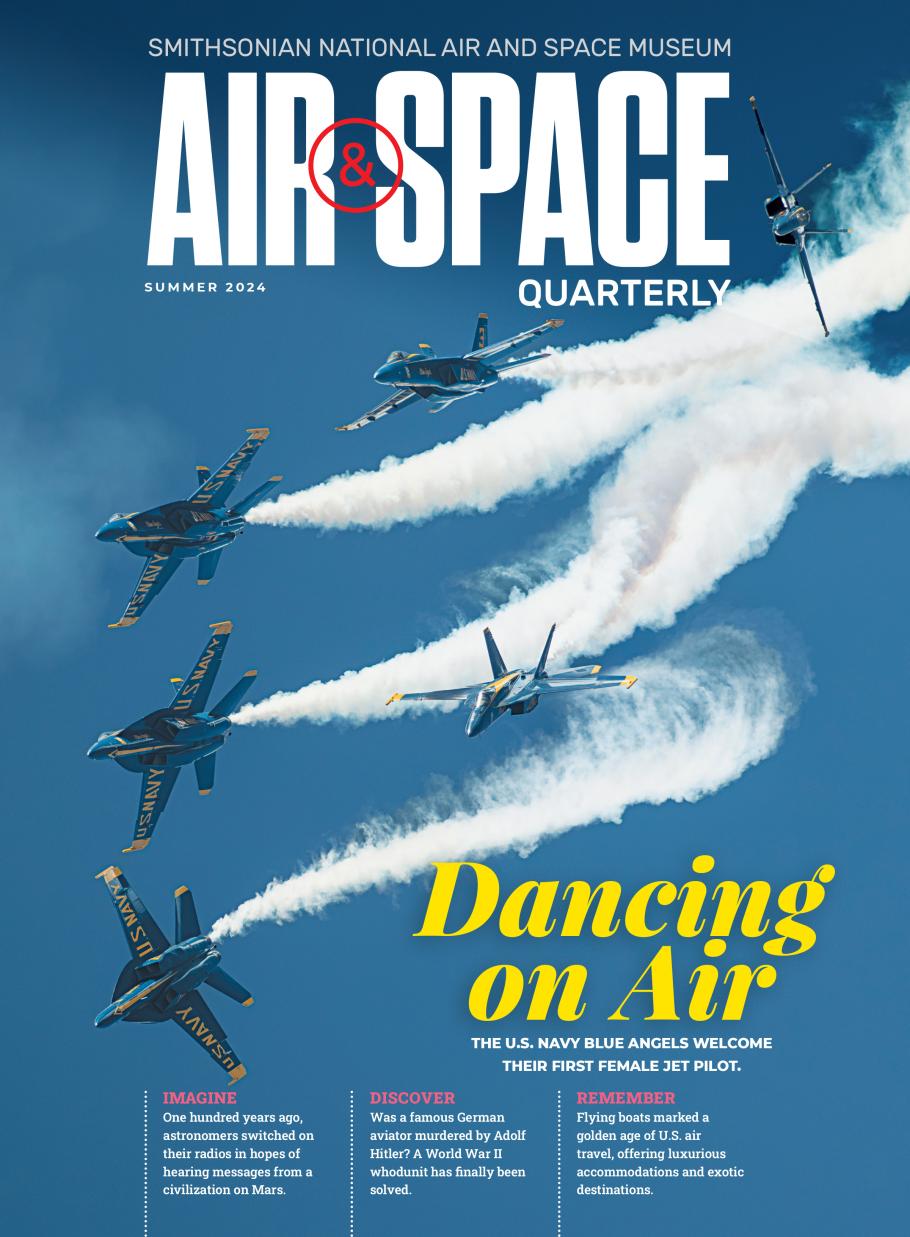
Bombs, Beer, and Black Cats
Jun 20, 2024
By Dave Kindy
This 100-year-old Navy veteran flew PBYs in World War II.
U.S. Navy veteran Cash Barber volunteers at the National Naval Aviation Museum in Pensacola, Florida.
There is a certain sound of pride in the voice of Cash Barber as he talks about his favorite aircraft: the Consolidated PBY Catalina. Few people today have more firsthand experience with the quintessential flying boat than Barber. During World War II, the U.S. Navy veteran served aboard several PBYs as a flight engineer and crew chief in the Pacific theater.
“It was slow and noisy and looked like a whale, but it was very reliable,” says Barber. Then, almost boasting, he adds: “The PBY sank more ships than any other aircraft—100,000 tons of enemy shipping.”
In addition to surface vessels, Catalinas also destroyed more than 40 submarines. Some 3,308 PBYs—“PB” for patrol bomber while “Y” represented Consolidated, the manufacturer—were built during World War II, the most of any flying boat.
Barber volunteers one day a week at the National Naval Aviation Museum in Pensacola, Florida, where he talks to visitors about the two Catalinas on display there. He points to a PBY suspended above him and tells listeners how he flew with a cigar box filled with small pieces of wood about the width of a pencil. “See those rivets on the hull?” he says. “If we made a rough landing, some would pop out. I’d take the plugs and pound them in the holes so we wouldn’t sink.”
Barber, who retired as a lieutenant commander after 30-plus years in the Navy, also recalls how he flew in VP-11, the Navy’s fabled Black Cat squadron. Since PBYs were slow and initially unarmed, VP-11 operated at night and the Catalinas were painted black to avoid detection—hence the nickname.
The Navy veteran also talks about notable PBY Catalinas of history, including one on patrol near Pearl Harbor—on December 7, 1941. Just before Japan launched the infamous morning attack, the Catalina dropped depth charges on an enemy mini-submarine. The PBY crew then sent a coded message alerting the Oahu naval base of its reconnaissance discovery, but it was not deciphered in time to save American lives.
One of Barber’s most memorable missions occurred in 1944, when he was part of a team picking up a replacement PBY. A member of his crew made a deal with the supply depot quartermaster for 200 cases of beer to bring back to their forward operating base about six hours away. Somehow, Barber managed to pack the precious cargo into the flying boat. On the return trip, however, an engine stopped working with two hours to go, forcing the aircraft to land on the ocean. A destroyer then towed the flying boat the rest of the way to base, where the beer was delivered to thankful, thirsty sailors. “Despite having an engine quit on us and making an emergency landing, that old plane took all that punishment,” he says.
Barber volunteers Tuesday mornings at the museum. Time has taken its toll, so he sits in a wheelchair to rest his legs while using a microphone to amplify his voice. He relishes meeting the public and telling them about the airplane he loves.
“It’s what keeps me going,” he says.
Dave Kindy is a frequent contributor.
This article is from the Summer 2024 issue of Air & Space Quarterly, the National Air and Space Museum's signature magazine that explores topics in aviation and space, from the earliest moments of flight to today. Explore the full issue.
Want to receive ad-free hard-copies of Air & Space Quarterly? Join the Museum's National Air and Space Society to subscribe.
Related Topics
You may also like
We rely on the generous support of donors, sponsors, members, and other benefactors to share the history and impact of aviation and spaceflight, educate the public, and inspire future generations. With your help, we can continue to preserve and safeguard the world’s most comprehensive collection of artifacts representing the great achievements of flight and space exploration.





